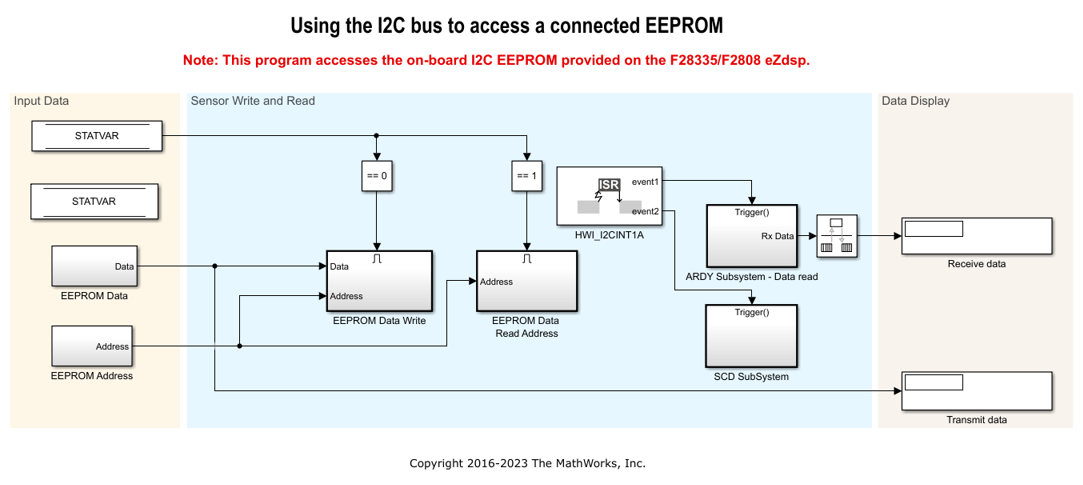C28x I2C Receive
Configure inter-integrated circuit (I2C) module to receive data from I2C bus
Libraries:
C2000 Microcontroller Blockset /
C2802x
C2000 Microcontroller Blockset /
C2803x
C2000 Microcontroller Blockset /
C2805x
C2000 Microcontroller Blockset /
C2806x
C2000 Microcontroller Blockset /
C280x
C2000 Microcontroller Blockset /
C2833x
C2000 Microcontroller Blockset /
C2834x
C2000 Microcontroller Blockset /
F280013x
C2000 Microcontroller Blockset /
F280015x
C2000 Microcontroller Blockset /
F28002x
C2000 Microcontroller Blockset /
F28003x
C2000 Microcontroller Blockset /
F28004x
C2000 Microcontroller Blockset /
F2807x
C2000 Microcontroller Blockset /
F2837xD
C2000 Microcontroller Blockset /
F2837xS
C2000 Microcontroller Blockset /
F2838x /
C28x
C2000 Microcontroller Blockset /
F28M35x /
C28x
C2000 Microcontroller Blockset /
F28M36x /
C28x
C2000 Microcontroller Blockset /
F28p65x
C2000 Microcontroller Blockset /
F28p55x
Description
The I2C Receive block configures the inter-integrated circuit (I2C) module to receive data from the two-wire I2C serial bus. The I2C Receive block supports I2C bus communication between the processor and external peripherals or other controllers. The block can run in either peripheral or controller mode.
When the I2C module is configured as controller, the module receives data from a peripheral. When the I2C module is configured as a peripheral, the module receives data from the controller. Configure the I2C module by navigating to Configuration Parameters > Hardware Implementation > Target hardware resources.
To read data from a peripheral, send the address of the register to be read using the I2C Transmit block to the peripheral. Ensure that the data is sent from the Tx FIFO to the peripheral before the data is read from the peripheral using the I2C Receive block. For more information, see Using the I2C Bus to Access Sensors.



